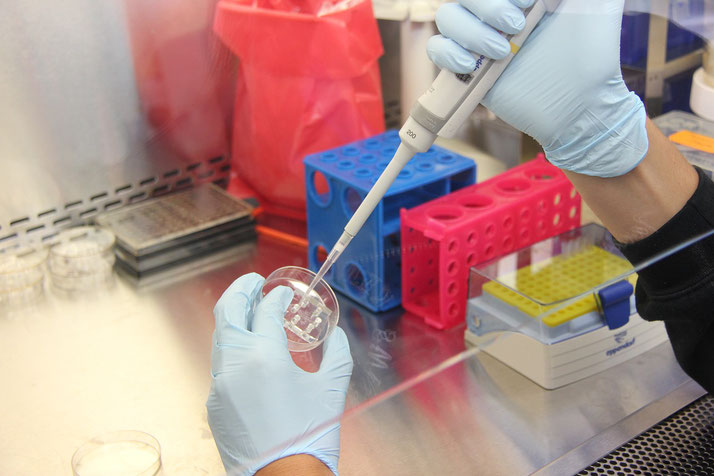How the Piltdown Man skull became the greatest hoax in anthropology

A hoax isn’t truly effective until it fools the people who should know better: and this one did, incredibly. In an age when beards were thick and doubt was rare, an odd skull fooled the experts, tricked the press, and changed textbooks.
That is all before it was finally revealed as an elaborate hoax that only worked because of perfect timing.
The race to discover humanity's 'missing link'
In the early 20th century, the theory of evolution, which was first proposed by Charles Darwin in the mid-19th century, had gained widespread acceptance among scientists.
However, there was still much to learn about the details of human evolution: particularly about the transition, 'the link', from apes to humans.
Finding this 'missing link' was seen as an important way to bridge that gap and give clear proof for the theory of evolution.
In addition, people believed that finding the missing link would help to answer basic questions about who we are and our place in the natural world.

The discovery of the Piltdown Man's skull
As the story goes, in 1911, an amateur archaeologist and lawyer Charles Dawson was given a fragment of a skull by a workman at a gravel pit in Piltdown, Sussex, England.
Dawson believed it might be a significant find and he kept searching the site to find more fragments.
Then, in 1912, he asked for help from British Museum paleontologist Arthur Smith Woodward to continue his excavations.
Together, they claimed to have found more skull fragments, a jawbone, teeth, and early tools, all believed to belong to the remains of a previously unknown hominid species: the supposed 'missing link.'
The two men shared their findings with the scientific community at the Geological Society of London in December 1912, when Dawson claimed that the bones were at least 500,000 years old.
He argued that the remains came from a stage in human evolution when the brain had grown in size but the jaw had stayed primitive.
The Piltdown Man was then formally named Eoanthropus dawsoni meaning 'Dawson's dawn man' in honour of its discoverer Charles Dawson.
The discovery, which quickly became known as the Piltdown Man, was widely celebrated.
In fact, it was quickly considered one of the most important finds in the study of human evolution.
As interest grew, an artist called John Cooke was hired to reconstruct the Piltdown Man's skull in 1913, and he created an image that was widely shared and added to the discovery’s overall credibility.
Prominent anatomist Sir Arthur Keith became one of the most vocal supporters of the Piltdown Man find and he used it to back his idea that the development of a large brain came before other human evolutionary traits.
Most importantly, at the time the discovery, it also boosted British national pride by suggesting that England was the birthplace of early human evolution.
When people became suspicious
However, some scientists were doubtful from the start, noting the differences between the human-like skull and the ape-like jaw.
Further doubts about the Piltdown Man appeared in the 1920s when the age of the bones was questioned, and some scientists suggested they might be much younger than first thought.
Others noted that the jaw and the skull looked like they belonged to different hominid species.
In 1923, German anatomist Franz Weidenreich examined the Piltdown fossils and openly stated that he thought that the skull was a mix of a modern human and an ape jaw.
Still, other scientists pointed out that the teeth looked very different from the skull.
Despite these criticisms, the Piltdown Man continued to be seen as proof of human evolution for several decades.
It was not until the 1950s that the hoax was finally exposed.
How the hoax was discovered
In 1953, new archaeology dating technique were used to show that the bones were actually only a few hundred years old, not hundreds of thousands.
Two types of absolute dating were used to achieve this: fluorine dating and radiocarbon dating.
Fluorine dating was still fairly new at the time but it had been improved by Kenneth Oakley.
It was a way of working out how old bones are by measuring how much fluorine they have absored from the ground they were buried in.
The more fluorine that was found in a bone, the longer it has thought to have been in the ground.
The breakthrough happened when scientists Kenneth Oakley, Wilfrid Le Gros Clark and Joseph Weiner applied this test to the Piltdown Man remains.

The other method, known as radiocarbon dating, measures the amount of carbon-14 in a chosen sample in order to work out its age.
When living organisms die, they slowly release carbon-14 that they had absorbed during their lifetime.
The older the remains are, the less carbon-14 is left in them. Therefore, scientists can determine a pretty accurate age of something like the Piltdown Man.
As a result, radiocarbon dating confirmed that the skull and jawbone were quite modern, and determined that they were less than 1,000 years old.
Together, these two dating methods proved that the Piltdown Man was a fake and not the ‘missing link’ people thought it was.
The skull turned out to be partially from a modern human, who was only about 600 years old.
To confirm their findings, scientists also tested the nitrogen levels in the bones and found that the jawbone was not human at all, but had come from a young orangutan.
It was determined that jawbone had been purposefully tampered with to hide where it came from.
Someone had broken it near the middle and its teeth were filed to look more like human ones.
Furthermore, the skull pieces and the altered jawbone had been stained with iron and chromic acid to make them look older than they really were, and to match the colour of the local gravel.
The exact place where the orangutan jawbone came from wasn't clear, but it definitely wasn't from the Piltdown area.
The finally discoveries of these tests were published in the journal Nature on November 21, 1953, and they brought an end to the hoax for good.
By then, over a dozen other hominid fossils, including Java Man and Peking Man, had been found in Asia and Africa.
These newer fossils were genuine, and didn’t match the proposed evolutionary development of the Piltdown Man.
Therefore, scientists had reached a growing concensus that it couldn't be real.
Who was responsible for the fraud?
Once people were aware of the deception, the next step was to work out who was to blame. Since so much time had passed between when it was first found and when the scientific test were completed, it was difficult to know for sure.
Today, no one knows for sure who faked the Piltdown Man, but there are some potential clues.
The trick was so detailed and clever that some people think more than one person was involved.
Still, a few people have been named as possible suspects.
The most obvious is the discoverer of the Piltdown Man himself, Charles Dawson.
But some experts have also pointed to other scientists from that time, like Arthur Smith Woodward and Pierre Teilhard de Chardin, could have done it.
Also, after he had helped with the digs, Jesuit priest de Chardin later stepped away from the discovery.
This move have made people wonder if he was involved.
Over time, some even blamed Sherlock Holmes creator sir Arthur Conan Doyle.
This is because he lived in Sussex when the bones were found and he was known to be very interested in archaeology.
However, there’s no solid proof that diffinitively linked him to this event.
The most recent study in 2016 came to the conclusion that Charles Dawson probably acted alone.
This study had carried out DNA tests, which seemed to show that both the canine and molar teeth found at the Piltdown sites came from the same orangutan, most likely from Borneo.
It also found that the bones and teeth had Piltdown gravel and dental glue inside them.
In the end, the collected forensic and chemical evidence supported the idea that Dawson was the most likely person behind the hoax.
Implications for the study of the past
Whoever was behind it, the Piltdown Man hoax is a warning about the risks of wishful thinking and the ability to persuade other people in the scientific community.
The fact that it lasted for more than 40 years made it one of the longest-running scientific fakes in history.
That meant that when the hoax was uncovered, it made scientists question their methods and look more carefully at how they study fossils.
It also started serious discussions about honesty in science and how peer review should work.
One sad result was that the hoax delayed the recognition of real ancient human fossils, like Australopithecus africanus, which was discovered in 1924 by Raymond Dart.
The Piltdown Man case became a clear example in science of why it’s important to be sceptical and use different types of evidence before accepting sensational claims.
What do you need help with?
Download ready-to-use digital learning resources
Copyright © History Skills 2014-2025.
Contact via email
With the exception of links to external sites, some historical sources and extracts from specific publications, all content on this website is copyrighted by History Skills. This content may not be copied, republished or redistributed without written permission from the website creator. Please use the Contact page to obtain relevant permission.





